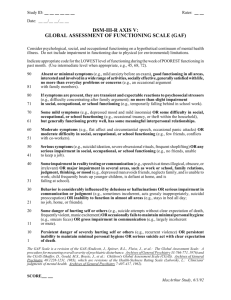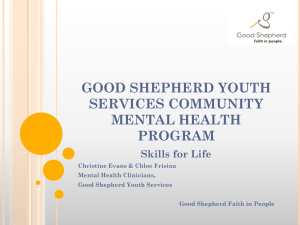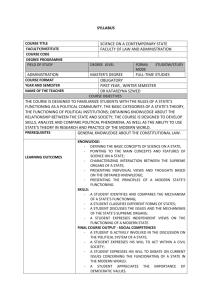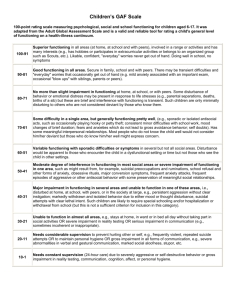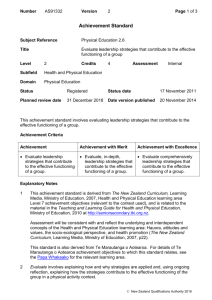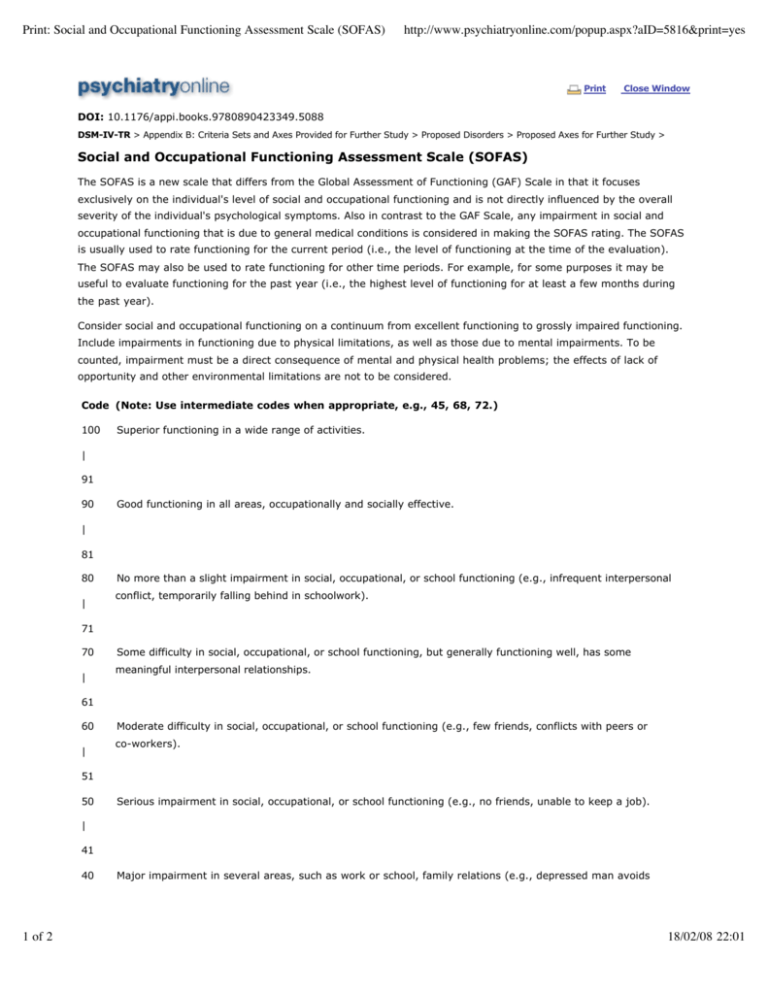
Print: Social and Occupational Functioning Assessment Scale (SOFAS)
http://www.psychiatryonline.com/popup.aspx?aID=5816&print=yes
Print
Close Window
DOI: 10.1176/appi.books.9780890423349.5088
DSM-IV-TR > Appendix B: Criteria Sets and Axes Provided for Further Study > Proposed Disorders > Proposed Axes for Further Study >
Social and Occupational Functioning Assessment Scale (SOFAS)
The SOFAS is a new scale that differs from the Global Assessment of Functioning (GAF) Scale in that it focuses
exclusively on the individual's level of social and occupational functioning and is not directly influenced by the overall
severity of the individual's psychological symptoms. Also in contrast to the GAF Scale, any impairment in social and
occupational functioning that is due to general medical conditions is considered in making the SOFAS rating. The SOFAS
is usually used to rate functioning for the current period (i.e., the level of functioning at the time of the evaluation).
The SOFAS may also be used to rate functioning for other time periods. For example, for some purposes it may be
useful to evaluate functioning for the past year (i.e., the highest level of functioning for at least a few months during
the past year).
Consider social and occupational functioning on a continuum from excellent functioning to grossly impaired functioning.
Include impairments in functioning due to physical limitations, as well as those due to mental impairments. To be
counted, impairment must be a direct consequence of mental and physical health problems; the effects of lack of
opportunity and other environmental limitations are not to be considered.
Code (Note: Use intermediate codes when appropriate, e.g., 45, 68, 72.)
100
Superior functioning in a wide range of activities.
|
91
90
Good functioning in all areas, occupationally and socially effective.
|
81
80
|
No more than a slight impairment in social, occupational, or school functioning (e.g., infrequent interpersonal
conflict, temporarily falling behind in schoolwork).
71
70
|
Some difficulty in social, occupational, or school functioning, but generally functioning well, has some
meaningful interpersonal relationships.
61
60
|
Moderate difficulty in social, occupational, or school functioning (e.g., few friends, conflicts with peers or
co-workers).
51
50
Serious impairment in social, occupational, or school functioning (e.g., no friends, unable to keep a job).
|
41
40
1 of 2
Major impairment in several areas, such as work or school, family relations (e.g., depressed man avoids
18/02/08 22:01
Print: Social and Occupational Functioning Assessment Scale (SOFAS)
http://www.psychiatryonline.com/popup.aspx?aID=5816&print=yes
Code (Note: Use intermediate codes when appropriate, e.g., 45, 68, 72.)
|
friends, neglects family, and is unable to work; child frequently beats up younger children, is defiant at home,
and is failing at school).
31
30
Inability to function in almost all areas (e.g., stays in bed all day; no job, home, or friends).
|
21
20
Occasionally fails to maintain minimal personal hygiene; unable to function indepen-dently.
|
11
10
|
Persistent inability to maintain minimal personal hygiene. Unable to function without harming self or others or
without considerable external support (e.g., nursing care and supervision).
1
0
Inadequate information.
Note: The rating of overall psychological functioning on a scale of 0–100 was operationalized by Luborsky in the
Health-Sickness Rating Scale. (Luborsky L: "Clinicians' Judgments of Mental Health." Archives of General Psychiatry
7:407–417, 1962). Spitzer and colleagues developed a revision of the Health-Sickness Rating Scale called the Global
Assessment Scale (GAS) (Endicott J, Spitzer RL, Fleiss JL, et al.: "The Global Assessment Scale: A Procedure for
Measuring Overall Severity of Psychiatric Disturbance." Archives of General Psychiatry 33:766–771, 1976). The SOFAS
is derived from the GAS and its development is described in Goldman HH, Skodol AE, Lave TR: "Revising Axis V for
DSM-IV: A Review of Measures of Social Functioning." American Journal of Psychiatry 149:1148–1156, 1992.
Copyright © 2008 American Psychiatric Publishing, Inc. All Rights Reserved.
2 of 2
18/02/08 22:01


